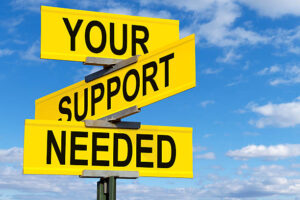
Britain’s government needs to bring in tighter lockdown rules to avert a fresh wave of deaths from a new strain of coronavirus, a leading epidemiologist and government advisor warned on Tuesday. If implemented, this could be the third national lockdown the country has seen since the beginning of the pandemic. Britain reported 41,385 new cases on Monday, the highest number since testing became widely available in the middle of 2020, and English hospitals say they have more COVID patients than during the first wave of the pandemic in April.
“We are entering a very dangerous new phase of the pandemic, and we’re going to need decisive early national action to prevent a catastrophe in January and February,” said Andrew Hayward, professor of infectious disease epidemiology at University College London.
There were 357 new deaths within 28 days of a positive test, the government’s coronavirus statistics portal said.
“This very high level of infection is of growing concern at a time when our hospitals are at their most vulnerable,” said Yvonne Doyle, Medical Director at Public Health England.
Prime Minister Boris Johnson and his scientific advisers have said a variant of the coronavirus, which could be up to 70 per cent more transmissible, was spreading rapidly in Britain, although it is not thought to be more deadly or to cause more serious illness.

Kim Yo Jong Is Ready to Become the First Woman Dictator in Modern History
The star of the younger sister of North Korea’s leader Kim Jong Un has risen so fast and high in the country’s ruling firmament in 2020 as to make her appear as a stand-in for big brother if not his rival for power. At 32, four years younger than Jong Un, Kim Yo Jong has made her presence known through shockingly tough statements that he had to have endorsed but she clearly wrote and recommended. Undoubtedly her most famous—and most effective—blast was her denunciation in June of North Korean defectors for firing off balloons from South Korea laden with leaflets criticizing the North Korean regime.
They were “human scum hardly worth their value as human beings,” “little short of wild animals who betrayed their own homeland,” she raged. It was “time to bring their owners to account” and ask “south (sic) Korean authorities if they are ready to take care of the consequences of evil conduct by the rubbish-like mongrel dogs who took no scruple to slander us while faulting the ‘nuclear issue’ in the meanest way at the most untimely time.”
Kim Yo Jong’s colorful rhetoric—more extreme than anything her brother has put out publicly since taking the reins after the death of their father, Kim Jong Il, nine years ago—struck a responsive chord here. South Korea’s national assembly, dominated by the ruling party of President Moon Jae-in, this month made it illegal to fire off not only leaflets but also candy bars and dollar bills and USB devices bringing traces of the good life south of the demilitarized zone to the hunger- and poverty-stricken North.
Murders soar in Miami-Dade in 2020, a year marked by the pandemic and tensions with police
One night in July, two men seeking revenge drove past a Brownsville home and fired indiscriminately into a group of people, including some just back from a trip to the local flea market. When the shooting stopped, a young child was dead and her baby cousin was injured. Two adults also suffered gunshot wounds. The death of 7-year-old Alana Washington — a “sweet and strong-willed child” who attended KIPP Miami charter school in Northwest Miami-Dade — shocked family, friends, the community and law enforcement. Six weeks later, after an intense search, police arrested two men and charged them with killing Alana.
The young girl’s violent death was part of a sharp increase in murders in Miami-Dade County in 2020, a year upended by the coronavirus pandemic that saw kids home from school, parents losing jobs and social justice protests heightening tensions between the community and police.
Officials recorded 272 homicides through Dec. 24 across Miami-Dade County, up 31 cases from all of 2019, records show. The year isn’t even over and it’s a recent high — up from 232 in all of 2017, and 252 in 2015.
Experts attribute the rise in violent crime to several factors: The pandemic has limited community policing and cut back on positive interaction between police and the public. Gun sales are through the roof. People are stuck at home and frustrated. Kids aren’t in school. The economy has tanked. And some of us just don’t like each other.
“I’m not going to blame it on COVID, but it’s a big part of it. Beefs are being settled in the streets with gun violence, which is disturbing. It’s more brazen. Some shootings are in broad daylight. Being home is part of the problem,” said Miami-Dade Police Director Alfredo “Freddy” Ramirez. “Across the county, we’re seeing a spike. We’ve been cooped up for nine months. Our way of life has changed. And there’s always a tipping point.”
But to those suffering from the gunfire, the reasons don’t matter much. Their loved ones are lost forever. Alana’s mother Shanlavie “Niecey” Drayton, said the holidays have been particularly hard and that Alana’s twin brother, Aaden, though getting help, is still confused about what happened.
“It’s worse during the holidays. It doesn’t feel normal. She was only seven. How am I supposed to deal with it?” Drayton asked. “He’s [Alana’s brother] used to having someone with him. Aaden is in therapy and getting lots of love.”
It’s not just murders by gunfire. The number of people who have been shot but survived is also up. As of Dec. 7 in unincorporated Miami-Dade, which covers roughly 1.2 million people, 311 people have been injured by gunfire — an increase of 16 percent from the previous year.
“It’s happening in every city and it’s happening at the same time,” said Alex Piquera, who heads up the sociology department at the University of Miami and studies crime trends. “Isolating the one thing causing it is impossible. I’ve never seen anything like this. Guns and drug sales don’t go away. But now you have the added stress of anxiety and police not patrolling the way they have in the past. Kids are at home or on the street, they’re not necessarily in class.”
Most of the shootings in unincorporated Miami-Dade have taken place in the north or southern ends of the county. The most southern section of unincorporated Miami-Dade has been hit particularly hard, with 40 shooting deaths and 115 people being injured by gunfire, significant increases from 2019.
Military recruiting crisis looms with U.S. youth too flabby to defend nation, retired generals say
A group of retired military leaders is warning the Pentagon that most of America’s youth is too out of shape to defend the nation.
The organization, known as “Mission Readiness” wants the Pentagon to help set up an interagency committee to address what it considers the nation’s military recruiting crisis.
They recently sent a letter to acting Secretary of Defense Christopher Miller, urging him to work with heads of other relevant federal departments and agencies to take a “holistic approach” to addressing issues ultimately impacting the ability of the military to recruit personnel.
According to the Department of Defense, 71 percent of young Americans are unable to serve in uniform, largely due to obesity, drug abuse, a poor education or a crime record.
“These factors largely fall outside of the Department of Defense’s purview but have an immense impact on the ability of the military to recruit new servicemembers as well as a significant monetary impact on the Department,” of Defense, retired Air Force Gen. William M. Fraser and retired Coast Guard Adm. James M. Loy wrote in their letter.
Elon Musk, Mark Zuckerberg and Jeff Bezos fortunes grow by £600billion during pandemic
As lockdowns plunged struggling Brits into poverty and has them relying on food banks, a handful of billionaires saw their personal fortunes rocket. Coronavirus has ravaged the world and families across the globe are living on the breadline.But for 614 billionaires in America, their bank balances have increased by a mega $931 billion since the virus first took hold.
The economy has tanked so far this year with millions of jobs on the line and budgets for many tighter than ever.In the UK, food banks are being used more than ever – with figures showing a 61% increase in food parcels being given out.
Meanwhile, the bosses at tech companies like Microsoft, Google and Zoom saw their profits increase during lockdowns, UniLad reported. USA Today identified the 30 billionaires who profited the most during the pandemic, including Elon Musk, Facebook’s Mark Zuckerberg and Amazon’s Jeff Bezos. Their combined $90.1 billion growth in wealth accounts for almost 10% of the total increase enjoyed by American billionaires in 2020 alone. Bezos, the founder and chief executive of Amazon, watched as his wealth rocketed $70bn to a eye-watering $185bn – primarily as millions of households were locked inside relying on deliveries.
Elon Musk, the maverick behind Tesla and outspoken internet personality, also saw financial benefits, as did Google’s Larry Page and social media guru Mark Zuckerberg.Since the virus first emerged it is estimated that 50 healthcare leaders have become billionaires, with 28 hailing from China.
These includee Uğur Şahin, the physician who co-founded BioNTech, which helped develop the Pfizer vaccine, and Stéphane Bancel, the CEO of Massachusetts-based Moderna.
Studies have found that Coronavirus caused a sharp rise in UK poverty, with one report suggesting poor households had increased by 700,000 to 15.2 million as a result of the pandemic.
Croatia’s Worst Quake Since 1880 Kills Five, Rattles Region
Croatia suffered its strongest earthquake in 140 years — for the second time in 2020 — with the tremor killing at least five people, devastating the city at its epicenter and rattling Europeans as far away as Rome and Vienna.
The temblor, measured at 6.3 by the European-Mediterranean Seismological Centre on Tuesday, was larger than both a 5.2 quake on Monday and a 5.3 tremor that caused $6 billion in damage when it hit the capital of Zagreb in March.
The earthquake brought down buildings near its epicenter in the town of Petrinja, where it killed a girl who was about 13 years of age, according to police. Four more people, including a father and son, were killed nearby in Glina, the town’s deputy mayor said, according to the Hina news agency.
Most buildings in Petrinja were damaged so badly they’re now unusable, Prime Minister Andrej Plenkovic said at the scene. Authorities were evacuating the hospital in the nearby city of Sisak, and the tremor also damaged structures in Zagreb, where people left their homes to wait out any potential aftershocks.
“2020 has brought us tragedy after tragedy,” Plenkovic said in comments on N1 Television. The broadcaster reported at least 20 people had been hospitalized with injuries, with two in serious condition.
The disaster adds to an already difficult year for the Adriatic European Union member state, which is already repairing 20,000 buildings from the March quake while also tackling one of the bloc’s worst surges in coronavirus cases and a record economic recession.
The quake was also felt in Rome, Budapest and Vienna. It was more powerful than one in 1963 that hit near the former Yugoslav town of Skopje, now the capital of North Macedonia, that killed more than 1,000 people and destroyed 80% of the city.
“This is horrible,” President Zoran Milanovic said while observing the damage in Petrinja. “Pure horror. The army is here, coming to help evacuate people.”
In Petrinja, a city of about 25,000 people that was almost destroyed in the bloody 1991-1995 breakup of Yugoslavia, video footage showed demolished houses and fallen roofs that resembled the damage from the war.
Vaccine Passports Are Big Tech’s Latest Dystopian Nightmare
As we begin this bleak pandemic winter facing unfathomable levels of illness and death, here’s a simple warning: Beware of geeks bearing gifts.
Silicon Valley keeps promising that they have the solution to our COVID-19 nightmare, and politicians keep buying. But nine months into this pandemic, their convoluted apps keep proving to be dangerous distractions—wasting time, wasting money, and maybe even getting people killed.
New products claim to do everything from optimizing vaccine distribution to tracing infections to monitoring who has immunity, as tech firms have worked to insert themselves into every facet of the public health fight. But the reality keeps falling short of the sales pitch, and recent debacles with vaccine priority algorithms and contact tracing apps are a warning for what’s coming next as the tech firms are just getting started. With this godsend of a vaccine comes a renewed push for immunity passports, an unproven technology with a racist history that deserves no place in 21st century health care, and a new wave of surveillance tools to monitor our health data.
The lost year: How Covid-19 left many Americans ‘stuck in time’
The coronavirus pandemic forced millions of Americans to cancel major life events: weddings and anniversary celebrations, rites of passage and family events, graduation ceremonies and retirement parties.
But the outbreak also thwarted plans that cannot be easily rescheduled for the brighter months of 2021. In a way, Covid-19 behaved like a thief, stealing precious time that may be lost forever.
In recent weeks, NBC News spoke to people across the United States for whom 2020 might be described as a lost year. The pandemic kept them from growing their families, starting careers, visiting elderly loved ones both here and abroad. It deferred their dreams — and potentially reshaped the course of their lives.
When the year began, Amy Schmidt Zook and her husband, Jason, were hoping to try for a third child. Zook went through two rounds of in vitro fertilization, or IVF, a process in which an egg and sperm are combined into an embryo in a lab.
Zook was planning on starting a third round in March, when the American Society for Reproductive Medicine recommended halting new fertility treatments as Covid-19 spread. Zook, 44, learned that her fertility clinic was following suit.
She worried her time was running out. When the clinic reopened in May and Zook was able to embark on another round of treatment, the process did not yield any viable embryos.
Amy Schmidt Zook and her husband, Jason, were hoping to conceive a third child this year.Courtesy Amy Schmidt Zook
“The time lost in the shutdown [may have] been literally the last embryos I made,” said Zook, who lives in Fort Worth, Texas. “I just knew … my eggs weren’t getting younger, and that was probably our last shot at it.”
Zook is one of thousands of people pursuing fertility treatments whose plans were upended by the pandemic — from women trying to conceive for the first time to parents hoping to expand their families. Zook, an emergency room doctor who is currently staying at home, said she felt fortunate that she had been able to conceive a son and a daughter. She said she had hoped that a third child would help her family feel “complete.”
The halting IVF process, combined with the emotional toll of the pandemic, has left her feeling “hopeless,” especially because women seeking IVF treatment are frequently told by doctors that time is of the essence — and constantly reminded of their biological clock.
“We’re obviously thankful for the little miracles we’ve been given,” Zook said. “It’s a weird situation, because you know that you’re super blessed to have what you have. But it doesn’t really change how you feel inside about what you wanted.”
Zook said she does not expect to continue IVF treatment even after the pandemic subsides.
“I think, especially after the shutdown and the roller coaster this year has been, it’s just not something we have the bandwidth for,” she said.
Where do our brains “go” when we fall asleep? A super network in the center of the brain could help solve one of the biggest scientific mysteries – how does human consciousness work? Scientists in Finland have discovered a central core network brimming with the same activity regardless of whether a person goes to sleep normally or loses consciousness due to anesthesia.
Researchers from the University of Turku conducted two experiments that revealed for the first time the natural mechanisms behind human consciousness and its connection to how people respond during sleep. One study examined brain activity of people being medically anesthetized, while the other looked at how the subjects responded as they slept naturally and after they woke up.
Along with using brain-imaging technology, researchers also asked participants a series of questions when they woke up. Those included topics like whether the volunteer was aware of their surroundings or remembered any of their dreams.
“One major challenge has been to design a set-up, where brain data in different states differ only in respect to consciousness. Our study overcomes many previous confounders, and for the first time, reveals the neural mechanisms underlying connected consciousness,” says principal investigator Harry Scheinin in a university release.


More Stories
Today’s News: April 26, 2024
Today’s News: April 25, 2024
Today’s News: April 24, 2024